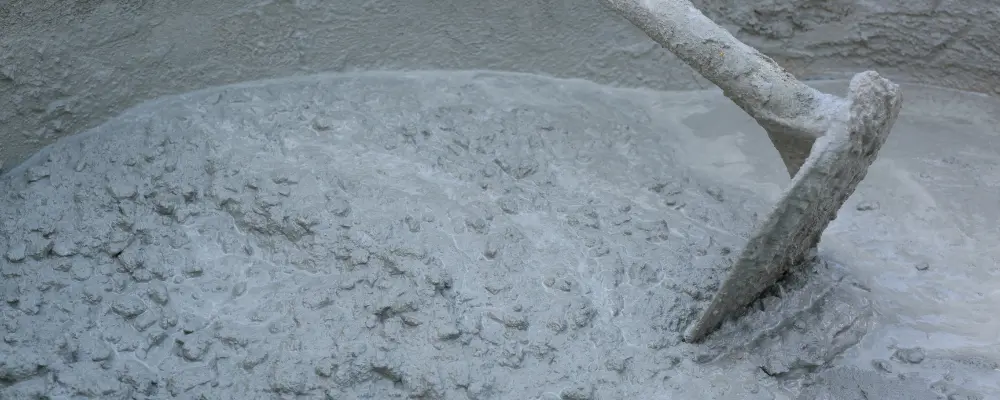Concrete is one of the most widely used materials in current construction and water-cement ratio is one term that is commonly heard in the domain of concrete construction. Read on to learn why this aspect is a crucial element of typical construction.
What is Water-Cement Ratio?
As the name suggests, water-cement ratio is the ratio of mass of water to the mass of cement in a concrete mix, generally expressed in decimal format. While this ratio can easily and quickly be modified during the concrete mixing process, it has significant long-term effects on a building. Water-cement ratio is one of the most important factors that determines quality of concrete, which further determines durability, performance and lifespan of the overall built structure.
Why is Water-Cement Ratio Important?
Variation in water quantity causes variations in the final quality of concrete, meaning that water-cement ratio has pivotal long-term and short-term effects on a building.
- Workability
Water acts as a bonding material for the other components of concrete, namely cement, sand and aggregates. In concrete construction, cement is first mixed with water to create a slurry and then combined with the other components. Decreased water in a cement mix means increased time consumption and labour for mixing and pouring and vice versa. Increase in water content means easier handling, however, it must be carefully controlled to prevent strength reduction.
- Strength
Water-cement ratio is one of the most significant factors that determines the long-term compressive and flexural strength of concrete. Lower values of water-cement ratio lead to the formation of fewer air gaps, meaning better compaction and higher strength. Increased water quantity results in large gaps or voids in the concrete after setting or drying, which extensively reduces its strength.
- Durability
High water content in a cement mix leads to the creation of air gaps and shrinkage upon hardening of concrete. These further lead to creation of cracks, meaning increased permeability. This results in water seepage into built structures, accompanied by formation of mould, mildew and microbial growth, all of which negatively impact the structure and reduce its durability.
Factors that affect Water-Cement Ratio
Mixing of water and cement seems like a simple concept, whose validity can be determined by visual and textural observation. However, this process calculations Water-Cement Ratio and considerations of all components of concrete.
- Cement Type
Different grades and types of cement have different water requirements to ensure workability and absorption. For example, OPC (Ordinary Portland Cement) generates more heat upon hydration and thus requires more water compared to PPC (Portland Pozzolana Cement), while lower grade cements require lower quantities of water compared to higher grades.
- Aggregate Properties
Aggregate size, type and shape affect water-cement ratio, due to their impact on friction and workability in a concrete mix. Well graded aggregates with diverse sizes of particles require lesser water than poorly graded aggregates with uniform sized particles.
- Sand Properties
Studies show that concrete with fine sand generally requires more water (meaning higher water-cement ratio) than concrete with coarse sand particles. This is also due to the impact of friction on ease of workability.
- Climatic Conditions
Environmental factors such as humidity and heat significantly affect water-cement ratio. For instance, hotter regions with a high rate of evaporation demand additional water compared to humid regions, where water requirement would be lower to ensure workability.
- Use of Admixtures
Inclusion of concrete admixtures such as water reducing admixtures or plasticisers in a concrete mix lead to the reduction in requirement of water (i.e, lower water-cement ratio) by 5% to 30%. This is especially beneficial in areas that face water scarcity and also ensures faster setting of concrete.
What is the Ideal Water-Cement Ratio?
The IS (Indian Standard) code provides guidelines and standards for water-cement ratio in different grades of concrete, which can be used to determine the right water quantity for construction in India. The recommended water-cement ratio generally ranges between 0.4 to 0.6, depending on the various components of concrete as explained in the previous section.
Minimum water cement ratios for PCC (Plain Cement Concrete) as per IS 456 (2000):
- M15 grade concrete: 0.60
- M20 grade concrete: 0.45-0.50
- M25 grade concrete: 0.40
Minimum water cement ratios for RCC (Reinforced Cement Concrete) as per IS 456 (2000):
- M20 grade concrete: 0.55
- M25 grade concrete: 0.50
- M30 grade concrete: 0.45
- M35 grade concrete: 0.45
- M40 grade concrete: 0.40
However, it is advisable to consult structural or civil engineers to derive water-cement ratio formulae for calculations based on specific site conditions.
How can Water-Cement Ratio be Checked?
It is important to test the strength and workability of concrete at different stages to ensure the right water-cement ratio.
- Slump test is a practical, efficient and commonly used test to determine this and involves placement of a fresh concrete mix in a cone-shaped mould. The amount of slump experienced by the concrete is then measured to determine its workability, flow and the accuracy of its water-cement ratio.
- Samples of concrete can be created in the initial stages of construction, for the conduction of various strength tests. These can aid in determining whether the right water-cement ratio has been utilised and then the same ratios can be followed for actual construction.
However, it is necessary to hire civil or structural engineers with adequate industrial knowledge to determine the ideal water-cement ratio based on specific site and project requirements, in order to ensure enhanced stability and increased durability of concrete structures. Contact Brick & Bolt —which conducts 470+ quality checks at every construction stage—to ensure the right structural requirements for the construction of your dream home today!

